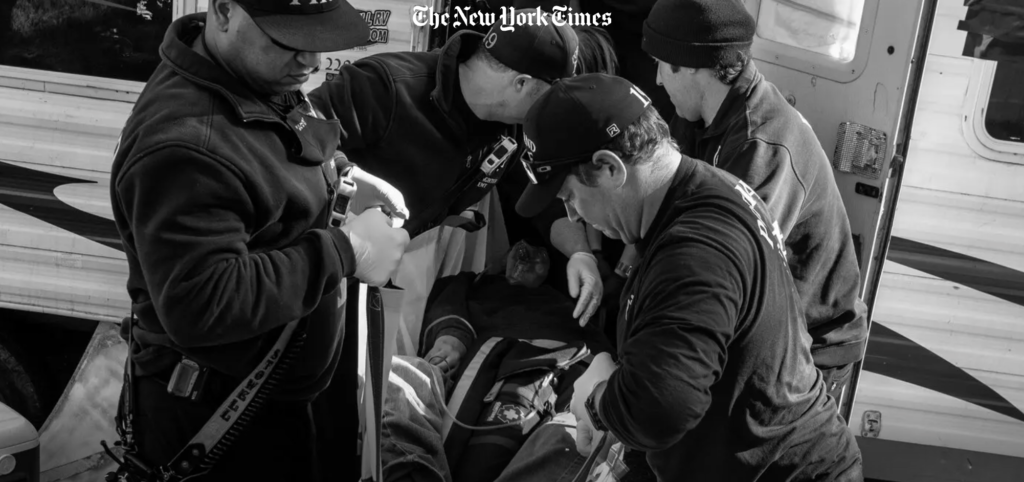Oregon’s experiment to curb overdoses by decriminalizing small amounts of illicit drugs is in its third year, and life has changed for most everyone in the city of Portland.

Photographs by Jordan Gale | Text by Jan Hoffman
Jordan Gale has been photographing the drug crisis in Portland for more than two years. Jan Hoffman, who covers addiction, spoke to many of his subjects about how life has changed since Measure 110.
For the past two and a half years, Oregon has been trying an unusual experiment to stem soaring rates of addiction and overdose deaths. People caught with small amounts of illicit drugs for “personal use,” including fentanyl and methamphetamine, are fined just $100 — a sanction that can be waived if they participate in a drug screening and health assessment. The aim is to reserve prosecutions for large-scale dealers and address addiction primarily as a public health emergency.
When the proposal, known as Measure 110, was approved by nearly 60 percent of Oregon voters in November 2020, the pandemic had already emptied downtown Portland of workers and tourists. But its street population was growing, especially after the anti-police protests that had spread around the country that summer. Within months of the measure taking effect in February 2021, open-air drug use, long in the shadows, burst into full view, with people sitting in circles in parks or leaning against street signs, smoking fentanyl crushed on tinfoil.
Since then, Oregon’s overdose rates have only grown. Now, tents of unhoused people line many sidewalks in Portland. Months long waiting lists for treatment continue to lengthen. Some politicians and community groups are calling for Measure 110 to be replaced with tough fentanyl possession laws. Others are pleading to give it more time and resources.
